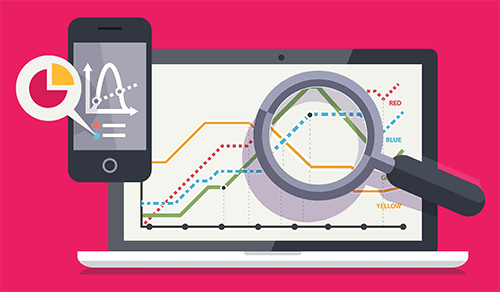After working with many small businesses, I realize that the metrics in Google AdWords can be daunting. In this blog, I attempt to demystify the metrics by describing them in simple terms and providing a little context around each of them. If there are other metrics you find confusing, don’t hesitate to let me know in the comments and I’ll do my best to help!
How To View These AdWords Metrics
Many of the metrics I’ll describe aren’t found in the default AdWords report tables. Instead, you’ll need to customize your table based on your own needs.
Google AdWords Metrics: In Simple Terms
Impression: The number of times your ads were served. Showing an ad is dictated by the AdWords auction. You can serve more ads by increasing your CPC bids, adding daily budget (if you’re budget limited), targeting more keywords or targeting more broadly.
Clicks: The number of clicks you received on your ads.
Click-Through Rate (CTR): The percentage of impressions that resulted in clicks. You can also think of this as your response rate. This is primarily affect by the quality of your ads, but also significantly impacted by your keywords, since even spectacular ads won’t generate many clicks if you’re targeting the wrong searches.
Average CPC: The average cost for each click generated. This is impacted by various factors from your bids and Quality Score to the amount of competition around a particular keyword/query. Check out our recent blog for more details.
Cost: The total you spent over the timeframe you’re reviewing.
Conversions: The number of desired actions (typically sales or leads) generated. If you don’t have conversion tracking established for your program, you obviously won’t see any data here. For information on setting up conversion tracking in AdWords, see 2 Options for Google AdWords Conversion Tracking.
Conversion Rate: The percentage of clicks that resulted in conversions. This is primarily impacted by the quality of your landing page and website. Many marketers, even seasoned veterans, will often try to modify/optimize ad copy to improve conversion rate. While this can have some impact, good landing page testing and optimization will likely yield better results.
Cost/Conv: The cost per conversion metric is, in my opinion, one of the most important metrics to review. It indicates how much money you spent to drive each conversion onsite. If you’re a lead generation-based business, take the time to understand how well AdWords leads convert into paying customers. By using that post-lead conversion rate along with your average profit, you can have a better understanding of what a reasonable Cost/Conv might be. This is also known as your Cost per Acquisition.
Search Impr. Share: The Search Impression Share tells you that, for every time you could have shown an ad based on your keyword, what percent of the time did you actually show an ad. The 2 reasons you might not show an ad are low Ad Rank (combination of bid, Quality Score and impact of ad extensions) and running out of daily budget. The impact of each can be seen in the Lost IS (rank) and Lost IS (budget) columns, respectively. (These are the columns I added in the video earlier.)
But Aren’t There More Metrics?
There are definitely more metrics, but these are the metrics most small businesses should be focused on. If you come across a metric you don’t understand, the question mark next to the metric provides a brief overview and links for more information.
The Breakdown
Since you’re spending advertising dollars in Google AdWords, it’s important to understand how impactful your ad spend is towards your business goals. The metrics discussed here help you understand your visibility, response from potential customers and how well your website is converting visitors. If there are other metrics you’d like to hear about, please let me know in the comments below.

